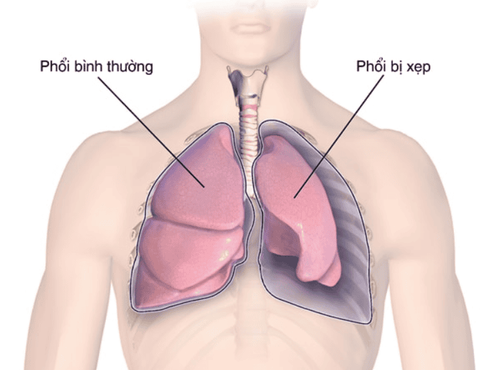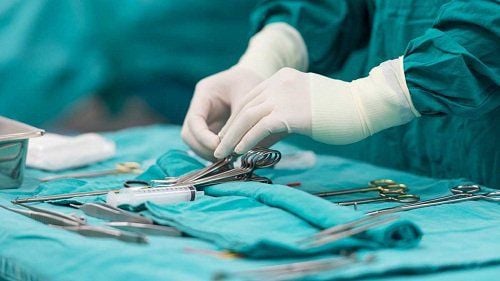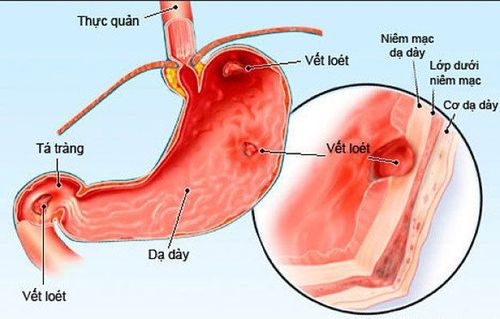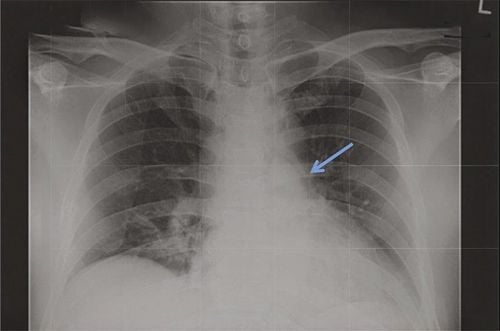This is an automatically translated article.
Mediastinal tumor is a disease that can affect any age and gender, accounting for up to 90% of mediastinal-related problems. One of the most widely used treatment methods for mediastinal tumors is the surgical method, especially the laparoscopic method of mediastinal tumor.
1. What is a mediastinal tumor?
Mediastinomas are defined as primary and secondary tumors, malignant and benign, that form in the mediastinum.
Symptoms of a mediastinal tumor can vary depending on the location, nature and size of the tumor. In general, mediastinal tumors can cause some symptoms such as:
Respiratory signs: cough, stridor, chest pain, shortness of breath...; Digestive signs: difficulty swallowing, hiccups...; Signs of nerve compression: pupillary constriction, narrowing of the eye slit, drooping eyelids, hoarseness, difficulty pronouncing, drooling, chest pain...; Signs of venous compression: eyelid edema, facial edema, neck edema, cyanosis, headache...; Signs of chest tube compression: relatively uncommon; Chest wall signs: localized swelling on one side of the chest; General signs: appearance of cervical lymph nodes above the clavicle.

U trung thất là căn bệnh rất phổ biến
2. Learn about thoracic surgery to remove mediastinal tumor
Laparoscopic surgery is considered a remarkable advancement of surgery worldwide, has many advantages over traditional methods such as:
Ensure minimal invasiveness; Wide field of vision and high accuracy; The postoperative process is relatively gentle for the patient: quick recovery, high aesthetics and no scarring. For thoracoscopic surgery to remove mediastinal tumors, this technique is indicated for all mediastinal tumors that meet the following conditions:
Diameter of mediastinal tumor is less than 5cm; The tumor showed no signs of invading important anatomical components in the mediastinum, such as blood vessels, nervous system, trachea, esophagus...; Tumor is located on one side of the chest, has not grown to the midline; For melanoma, the tumor must be at an early stage and not have invaded the cortex. In addition, the patient needs to meet the following requirements:
The patient does not have any diseases or problems that are contraindicated for thoracoscopic surgery; There are no contraindications in anesthesia.
3. Steps to perform laparoscopic surgery for mediastinal tumors
3.1 Patient position The patient is placed in supine or 45 degree side/90 degree side position depending on tumor location.
3.2 Anesthesia The technique of anesthesia in laparoscopic surgery to remove mediastinal tumors is an endotracheal anesthetic technique. This technique not only provides general anesthesia for the patient, which is maintained throughout the surgery, but also supports respiratory control, limiting respiratory complications during surgery.
3.3 Placing trocart Based on tumor location, doctors will place 3 trocarts including: 1 10mm trocart for camera and 2 5mm trocart for surgical instruments. In some cases, it can be used in combination with VATS.
3.4 Principles of thoracoscopic surgery The surgery must remove all lesions but always respect the surrounding anatomical components.
4. Some complications may occur after laparoscopic surgery for mediastinal tumors
4.1 Bleeding Therefore, the patient still needs to keep the drains for monitoring – detect this complication in time, then treat it properly.
4.2 Atelectasis - respiratory failure Atelectasis - respiratory failure occurs due to poor drainage, sputum obstruction... The patient needs to practice breathing, flutter, loosen phlegm... to overcome.

Xẹp phổi là một trong những biến chứng thường gặp sau phẫu thuật nội soi lồng ngực u trung thất
4.3 Infections This complication is uncommon, mainly pneumonia and trocart foot infections.
5. What do patients need to prepare before thoracic surgery?
Some medications may have to be stopped before surgery, eg anticoagulants, nonsteroidal anti-inflammatory drugs (aspirin, naproxen, ibuprofen...).
For 12 hours before thoracoscopy, the patient should not eat or drink anything.
If necessary, the night before the thoracoscopic surgery to remove the mediastinal tumor, the doctor will give you a sedative.
6. What to do after performing laparoscopic mediastinectomy?
Usually, the patient will be kept in the hospital for a few days until fully recovered. During this time, doctors will regularly monitor the patient's pulse, blood pressure, body temperature and breathing signs to prevent complications.
In addition, the patient may also have to:
Take pain relievers to ease discomfort from surgery. Chest X-ray to check if the lungs are inflated.
7. Where should thoracoscopy be performed?
Laparoscopic surgery for mediastinal tumors is a technique with high difficulty, requiring the operator to have extensive experience and high expertise, to ensure the least invasiveness to the patient's body and to be effective. highest treatment results.
Currently, Vinmec International General Hospital is a reliable address to perform the above surgery. Vinmec International General Hospital gathers a team of famous doctors and nurses in the industry, with good expertise, rich experience, heart and vision. Not only are there domestic doctors, there are also foreign doctors from Japan, Singapore, etc. to help patients access new and effective treatment regimens from countries with developed medical backgrounds. In the world.
In addition, the system of facilities here is very modern. The machines are all imported, new and high quality, effectively supporting the doctor's diagnosis and treatment process faster and more effectively. To register for examination and treatment at Vinmec International General Hospital, please book an appointment on the website for service.
Please dial HOTLINE for more information or register for an appointment HERE. Download MyVinmec app to make appointments faster and to manage your bookings easily.
SEE ALSO:Learn about mediastinoscopy Laparoscopic surgery to remove large mediastinal tumors (5cm) Mediastinal resection by open surgery













